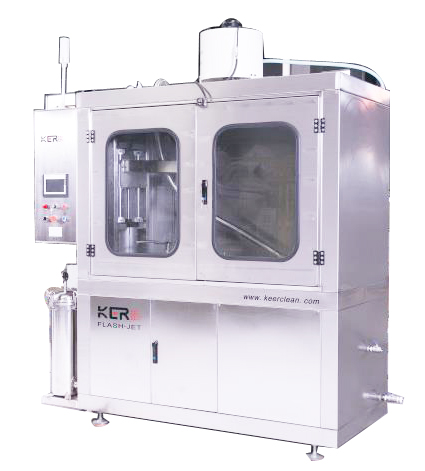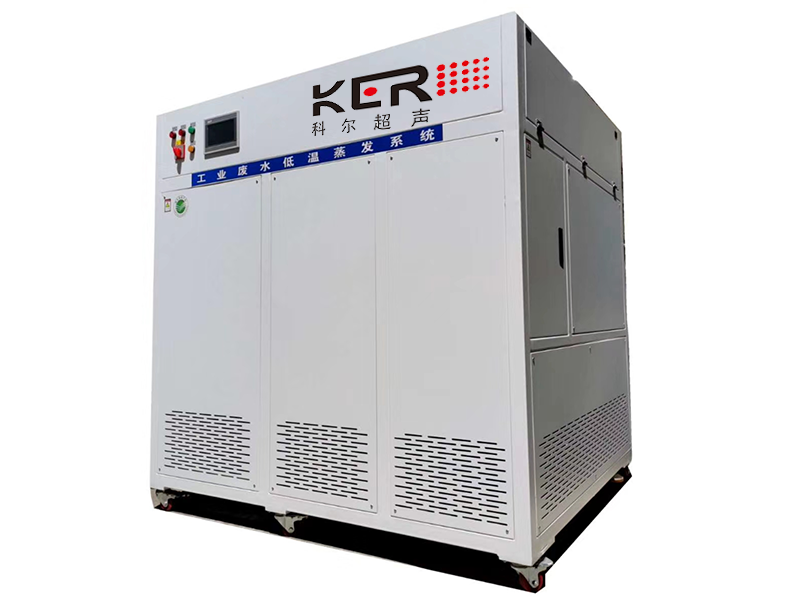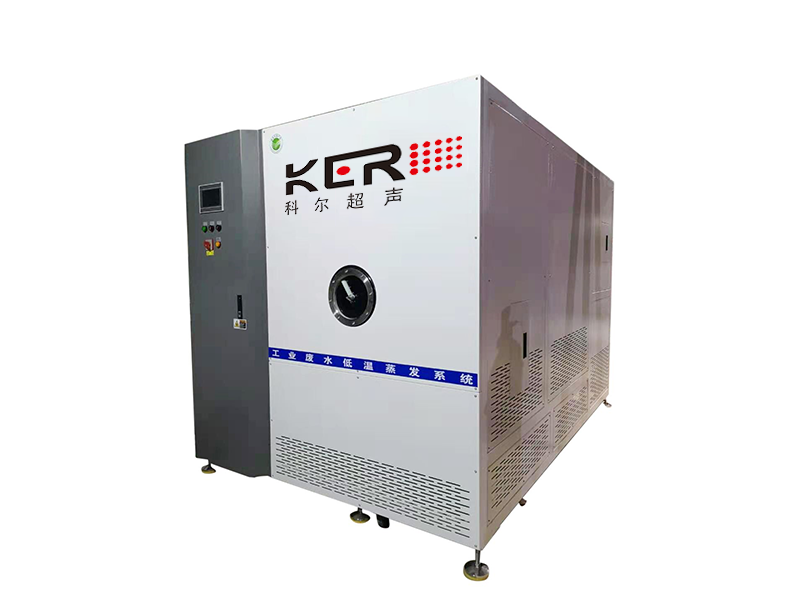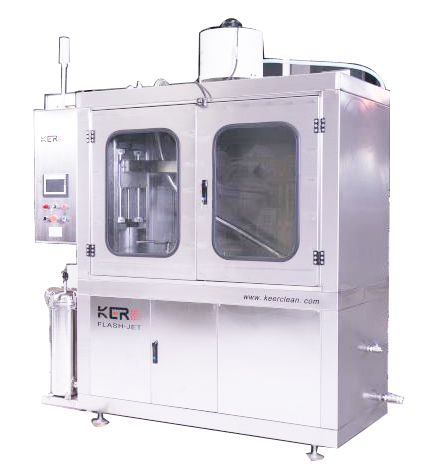歡迎訪問濟南(nán)科爾超聲波設備有(yǒu)限公(gōng)司網站!
 91污_91污视频_91免费视频污_91视频污下载
91污_91污视频_91免费视频污_91视频污下载

新聞資訊
怎麽選擇超聲波清洗設備?
作者:admin來源:http://www.ahfanglei.com/時間:2022-03-04
一、超聲波(bō)清洗設備頻率的選擇
1、 Frequency selection of ultrasonic cleaning equipment
超聲清洗(xǐ)頻率從28kHz到120kHz之間,在使用水或水(shuǐ)清洗劑時由空穴作用引起的物理清洗力顯然對低頻(pín)有利,一般使用28-40kHz左右。對小間隙、狹縫、深孔的零件清洗,用高頻較好,甚(shèn)至幾百kHz。對鍾表零件清洗時,用400kHz。若用寬帶調(diào)頻清洗,效果更良好。
The ultrasonic cleaning frequency ranges from 28kHz to 120kHz. When using water or water cleaning agent, the physical cleaning force caused by the action of holes is obviously beneficial to the low frequency. Generally, it is about 28-40khz. For parts with small gaps, slits and deep holes, high frequency is better, even hundreds of kHz. When cleaning clock parts, use 400kHz. If you use broadband FM cleaning, the effect is better.
二、超聲波清洗設備功率的選擇
2、 Power selection of ultrasonic cleaning equipment
超聲波清洗效果不一定與功率(lǜ)×清洗時間成正比,有時用小功率,花費很長時間也沒有清除汙垢。而(ér)如果功率(lǜ)達到一(yī)定數值,有時很快便將汙垢去除。若選擇功率太大,空化強度將大大增加,清洗效果是提高了(le),但這(zhè)時使較精密的零件也產生蝕點,得不償失,而且清洗(xǐ)缸底部振動板處空化嚴重,水點腐蝕也增大,在采用三氯(lǜ)乙烯(xī)等有(yǒu)機溶劑時,基本上沒有問題,但采用(yòng)水或水溶性清洗液時,易於受到水(shuǐ)點(diǎn)腐蝕,如果振動板表(biǎo)麵已受到傷痕,強功率下水底產生空化腐蝕更嚴重,因此要按(àn)實際使用(yòng)情況選擇超(chāo)聲功率。


Ultrasonic cleaning effect is not necessarily related to power × Cleaning time is in direct proportion. Sometimes with low power, it takes a long time without removing dirt. If the power reaches a certain value, sometimes the dirt will be removed quickly. If the power is too large, the cavitation intensity will be greatly increased and the cleaning effect will be improved, but at this time, the more precise parts will also produce corrosion spots, which is not worth the loss. In addition, the cavitation at the vibrating plate at the bottom of the cleaning cylinder is serious and the water spot corrosion also increases. There is basically no problem when using organic solvents such as trichloroethylene, but when using water or water-soluble cleaning solution, it is easy to be corroded by water spots, If the surface of the vibrating plate has been damaged, cavitation corrosion at the bottom of the water under high power is more serious, so the ultrasonic power should be selected according to the actual use.
三、超聲波清洗設備清洗液溫度(dù)的(de)選擇
3、 Selection of cleaning fluid temperature for ultrasonic cleaning equipment
水清洗液適宜的清洗溫度為40-60℃,尤其在天冷時若清洗液溫度低空化效(xiào)應差,清洗效果(guǒ)也差。因此有部分清洗機在清洗缸外邊繞上(shàng)加熱電熱絲進行溫度控製,當溫(wēn)度升高後空化易發生(shēng),所(suǒ)以(yǐ)清(qīng)洗效果較好(hǎo)。當溫度繼續升高以後,空(kōng)泡內氣體壓力增加,引起衝擊聲壓下降,反應出這兩因素的(de)相乘作用。
The suitable cleaning temperature of water cleaning solution is 40-60 ℃, especially in cold weather. If the temperature of cleaning solution is low and the cavitation effect is poor, the cleaning effect is also poor. Therefore, some cleaning machines wrap heating wires around the outside of the cleaning cylinder for temperature control. When the temperature rises, cavitation is easy to occur, so the cleaning effect is good. When the temperature continues to rise, the gas pressure in the cavity increases and the impact sound pressure decreases, reflecting the multiplication of these two factors.
四(sì)、超聲波清洗設備清洗籃的使用
4、 Use of cleaning basket of ultrasonic cleaning equipment
在清洗小零件物品時,常使用網(wǎng)籃,由於網(wǎng)眼要引(yǐn)起超聲衰減,要特別引起注意。當頻率為28khz時使(shǐ)用10mm以上(shàng)的網眼為好。
When cleaning small parts, the basket is often used. Because the mesh will cause ultrasonic attenuation, special attention should be paid to it. When the frequency is 28kHz, it is better to use a mesh of more than 10mm.
五、關於清洗液量的多少和(hé)清洗零件的位置的確定
5、 Determination of the amount of cleaning fluid and the position of cleaning parts
一般清洗液(yè)液(yè)麵高於振動子表麵100mm以上為(wéi)佳。由於單頻清洗機受駐波場的影響,波節處振幅很小,波幅處振幅大造成清洗不均勻。因此(cǐ)選擇清洗(xǐ)物品位置應放在波幅處。
Generally, the liquid level of cleaning fluid is more than 100mm higher than the surface of vibrator. Because the single frequency cleaning machine is affected by the standing wave field, the amplitude at the wave node is very small, and the amplitude at the wave amplitude is large, resulting in uneven cleaning. Therefore, the position of cleaning articles should be placed at the wave amplitude.
六(liù)、超聲波清洗設備(bèi)不同的清洗液,要區分的清(qīng)洗係統(tǒng)
6、 Ultrasonic cleaning equipment different cleaning fluid, to distinguish the cleaning system
水性係統:通常由敞口槽組成,工件(jiàn)浸沒其中(zhōng)。而複雜的係統由多個槽組成,並配備循環過濾係統(tǒng)、衝(chōng)淋槽、幹燥槽以及其它附件。
Aqueous system: it is usually composed of an open tank in which the workpiece is immersed. The complex system consists of multiple tanks and is equipped with circulating filtration system, flushing tank, drying tank and other accessories.
溶劑係統:多為超聲波汽相除油脂清洗機,常配備廢液連續(xù)回收裝置。超聲波汽相清除油脂過程是由溶劑蒸發槽和超聲浸洗槽形成的集成式多槽係統完成的。在熱的溶劑蒸汽和超聲激蕩共同作用下,油(yóu)、脂、蠟以及其(qí)他溶於溶劑的汙垢就被除去。經過一(yī)係列清(qīng)洗工序後下料的工件發熱、潔淨(jìng)、幹燥。
Solvent system: mostly ultrasonic vapor phase degreasing cleaning machine, often equipped with waste liquid continuous recovery device. The ultrasonic vapor phase oil removal process is completed by an integrated multi tank system formed by solvent evaporation tank and ultrasonic immersion tank. Under the combined action of hot solvent vapor and ultrasonic agitation, oil, grease, wax and other dirt dissolved in solvent are removed. After a series of cleaning procedures, the workpiece is hot, clean and dry.
七、超聲清洗工藝及清洗液的選擇
7、 Ultrasonic cleaning process and selection of cleaning solution
在購買清洗(xǐ)係統之前,應對被清洗件做如下應用分析:明確被洗件的材料構成、結(jié)構和數量,分析並明確要清除(chú)的汙(wū)物,這些都是決定所要使用什麽樣的清洗方法(fǎ),判斷(duàn)應(yīng)用水性清洗液還是用溶劑的先決條件。終的清洗工藝還需做清洗實驗來驗證。隻有(yǒu)這樣(yàng),才能提供合適的清洗(xǐ)係統、設計合理的清洗工序以及清洗液。考慮到清洗液的物理特(tè)性對超聲清洗的影響,其中蒸汽壓、表麵(miàn)張力、黏度以及密度應為顯著的影(yǐng)響因素。溫度能影響這些因素,所以它也會影響空(kōng)化(huà)作用的效率。任何清洗係統必須使用清洗液。
Before purchasing the cleaning system, the following application analysis shall be made for the cleaned parts: clarify the material composition, structure and quantity of the cleaned parts, analyze and clarify the dirt to be removed, which are the prerequisites for determining what kind of cleaning method to use and judging whether to use aqueous cleaning solution or solvent. The final cleaning process needs to be verified by cleaning experiment. Only in this way can we provide appropriate cleaning system, reasonably designed cleaning process and cleaning solution. Considering the influence of the physical characteristics of cleaning fluid on ultrasonic cleaning, steam pressure, surface tension, viscosity and density should be significant factors. Temperature can affect these factors, so it will also affect the efficiency of cavitation. Any cleaning system must use cleaning fluid.
八、超聲波(bō)清洗(xǐ)設備清洗件處理
8、 Treatment of cleaning parts of ultrasonic cleaning equipment
超聲清洗的另(lìng)一個考慮因(yīn)素是清洗件的上、下料或者(zhě)說是放置清(qīng)洗件的工裝的設計。清洗件在超聲清洗槽內時,無論清(qīng)洗件還是清洗(xǐ)件籃都不得觸及槽底(dǐ)。清洗件總的橫截麵(miàn)積不應超過超聲槽橫截(jié)麵積的70%。橡膠以及非剛化塑料會吸收超聲波能(néng)量,故將此類材料(liào)用於工裝時應謹慎。絕緣的清洗件也應引起特別注意。工裝籃設(shè)計不當,或所盛(shèng)工(gōng)件太重,縱(zòng)使的超聲清洗係統的效率也會被大大降低。鉤子、架子以及燒杯(bēi)都可用來支持清洗件。
Another consideration of ultrasonic cleaning is the loading and unloading of cleaning parts or the design of tooling for placing cleaning parts. When the cleaning part is in the ultrasonic cleaning tank, neither the cleaning part nor the cleaning part basket shall touch the bottom of the tank. The total cross-sectional area of the cleaning parts shall not exceed 70% of the cross-sectional area of the ultrasonic tank. Rubber and non rigid plastics absorb ultrasonic energy, so care should be taken when using these materials in tooling. Special attention shall also be paid to the cleaning parts of insulation. The efficiency of the ultrasonic cleaning system will be greatly reduced even if the tooling basket is not designed properly or the workpiece is too heavy. Hooks, shelves and beakers can be used to support cleaning parts.
推薦產品
推薦文章
 公司:濟(jì)南科爾超聲波設備有限公司
公司:濟(jì)南科爾超聲波設備有限公司  熱線:18663767799
熱線:18663767799 地址:山東省濟南市濟陽區創業路與啟航街交叉(chā)口南40米
地址:山東省濟南市濟陽區創業路與啟航街交叉(chā)口南40米








 新聞資訊
新聞資訊

 聯係91污
聯係91污
 谘詢電話:18663767799
谘詢電話:18663767799 E-MAIL:jnkergs@163.com
E-MAIL:jnkergs@163.com 地址:山東省濟南(nán)市濟陽區創業路與啟航街交叉(chā)口南40米
地址:山東省濟南(nán)市濟陽區創業路與啟航街交叉(chā)口南40米 魯公網安備 37011202001385號
魯公網安備 37011202001385號
